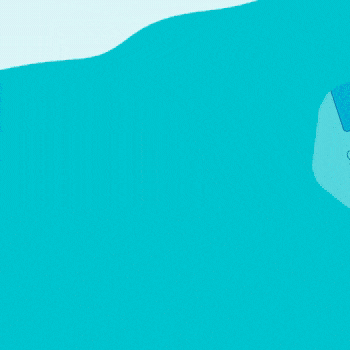Zero Waste Packaging: Eliminating Plastics to Level Zero
The Packaging Waste Problem
Plastic is the workhorse material of the modern day economy and is extensively used in manufacturing packaging. Over the last few years, plastic consumption has increased rapidly. Even though plastics have a lot of useful properties, they also generate waste. Plastic packaging is one of the major contributors.
Limitations of Recycling
One of the major causes of plastic pollution is plastic that is not recycled. A lot of countries and region do not actively encourage recycling and often plastics end up in the landfill or in oceans. Furthermore, some plastics are non-recyclable. These include plastic wraps, Styrofoam cups and plates, CD cases, and so on. According to the Swedish EPA, only 47% of all the plastics in the Swedish market was recycled in 2016. That still leaves behind over 100,000 tonnes of plastic.
Plastics in Oceans
If the plastic consumption continues at this rate, by 2050, there will be more plastic in the oceans than fishes. A lot of aquatic animals are dying because of plastic in the oceans. Plastic has been found in over 60% of all aquatic animals, and in almost 100% of sea turtles.
 Image – www.plasticpollutioncoalition.org
Image – www.plasticpollutioncoalition.org
The Casual Attitude of Consumers
Not every consumer is aware of the consequences of plastic pollution and how it will affect them. Many regions do not have any legal infrastructure to prevent littering or plastic pollution. Particularly in suburban regions of developing countries, people are often not educated enough to understand the consequences of excess plastic consumption.
Bans on Disposable Plastic in Different Regions
Different regions, especially ones in the EU are banning single-use plastics and Luxembourg is one of the frontline countries who joined the movement. These include plastic cups, plastic straws, excessive packaging and so on. Iceland, for instance, has banned the box that is used for packaging toothpaste. Many other regions have also similarly banned excessive packaging. This means manufacturers need to adapt to the market in these regions.
Tips to Implement Zero Waste Packaging
Eco-friendly Alternatives to Plastics
A lot of manufacturers are now switching to minimal packaging and are using materials such as paper, glass, wood and other eco-friendly and reusable materials instead of plastic packaging. Unwrapped life has been using Kraft paper for almost all of their products, including soap bars, conditioner bars, shampoo bars and so on. They have also switched from using plastic tape to Kraft paper tape. Besides paper-based packaging materials, other compostable packaging materials are good alternatives too.
For instance, the coffee packaging made by Level Ground Trading is made from wood pulp and is completely biodegradable.
Image – www.graphis.com

Image – www.swedbrand-group.com
You might also like to read about how safe is the biodegradable food packaging market.
Waste Transformation Packaging
The waste transformation aims to make the packaging reusable in some other form. For example, the packaging of Stanley Honey can be reused as a planter. The packaging can be transformed as a vase or as a pot for planting small plants. Hobbyists and creative individuals have previously reused plastic bottles as supply cups, planters, piggy banks, trash cans, and more.
Image – neon-creative.com
Bring Your Own Packaging
A new trend encourages customers to bring their own reusable packaging. OUNI is a shop in Luxembourg that encourages shoppers to bring their own packaging and have 1230 members as of today this article is published.(read more about them here)
Many places in the UK, Canada and Amsterdam has been set up that provides no packaging and expects customers to bring along bags and jars.
IKEA has started using mushroom-based packaging for most of its products.
Plastic-free Labeling
A lot of products still rely on plastic labeling which may not be made from recyclable plastics. This is particularly true for shrink-wrap labels. Often the inks used in printing the labels make recycling the plastic much more difficult. That is why plastic labeling is being phased out in many regions. Iceland is one of the first countries to enforce plastic-free labeling.
Ekoplaza, the Dutch supermarket chain will also stock products without plastic labeling.
The UK tea brand Teapigs will also switch to plastic-free labeling, making recycling much easier.
Conclusion
Sustainability comes at a price and often, it is not convenient or easily attainable. Zero waste packaging can neither completely replace the convenience of plastic packaging, nor is it cheap. But it is a necessity considering the impact that plastic packaging has on the planet.
These and much more are all considered in our packaging policies to find the best solution for you. You are always welcome to propose us as well.
Our solution
We decided to join the movement and run our business zero waste as well and cut 100% plastic. Therefore, we looked into different possibilities and came up with the most sustainable solution on the planet for micro-scale.
We designed for you a 100% plant-based, biodegradable and compostable bag hand-made from cattail leaves by women. Read more about our zero waste bags here.
Reference: Rangan Das – https://bizongo.com








